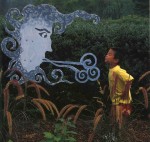There is something intangible that is gained when a child has a direct, visceral connection with nature. A part of their heart opens and an awareness of the broader world becomes possible. Many children though, perhaps most, never form this connection and the Earth remains an inanimate object to them. All too many of our playgrounds are made of plastic and metal, with asphalt, wood chips and maybe a bit of grass in between.
TM&A was approached in 2011 by the Hilltop Montessori School in Brattleboro to help them to significantly expand the opportunities that their youngest students have to experience nature. Working with ecological landscape designer Sean Walsh we created the redesign of the school’s ‘Children’s House’ playground for three to six year olds.
As designers, we see tremendous potential for the growing of holistic playscapes that in turn grows vibrant, healthy people. Although financial resources always have to be mustered, creatively viewing the design, implementation, and maintenance of a playscape as a community design challenge can lessen the dependence on financial capital by leveraging the social, intellectual, and environmental capital that is available. Achieving the goal of a living, vibrant playground that helps to foster children with an ethos of stewardship takes persistence and commitment. That commitment is not just to fundraising to build the playground, but also to publicizing the project, to figuring out ways to maintain its elements, to helping it to evolve in a way that matches both the needs and abilities of its students, and to supporting the people who instigate and steward the playground.
An ecological playground is one that fits in with the greater environment around it and embodies the processes of ecology: the cycles of day and night, the changing of the seasons, the patterns of weather, the cycling of water and nutrients through the system, the interconnections of the various life forms that inhabit the space. A natural playground is not static—it embraces the changes, both dramatic and subtle, that provide crucial insight into the workings of our world. To be successful, a natural playground must embody an understanding of ecology in a way that provides for the developmental needs of the students, that seeks to uncover the ecological processes at work and make them visible, engaging, and safe for students to interact with and explore. In this way, a natural playground doesn’t depend upon artificial installations but instead serves as a window into nature in real-time.
We believe that if a school is successful in growing a natural playground it will act as a piece of that fabric through which the world will be renewed. Is this not the hope of every good teacher, and every good school?
 Here is the design report for the natural playground at Hilltop:
Here is the design report for the natural playground at Hilltop:
Hilltop Natural Playscape Design Report
TM&A also worked with Abrah Dresdale of Feeding Landscapes and permaculturist Anna Bowler to help the Canal Street School in Brattleboro to think through the possibility of transforming their preschool playground into a natural playscape. Below are the design proposal that we submitted to the school as well as the plan for a children’s ‘forest garden’ that was installed by some local permaculturists in 2011 under Abrah & Anna’s supervision.
We have Powerpoint presentations on natural playgrounds that Tad Montgomery developed. Contact us if you would like a presentation on this subject or to see a version of the Powerpoint.






